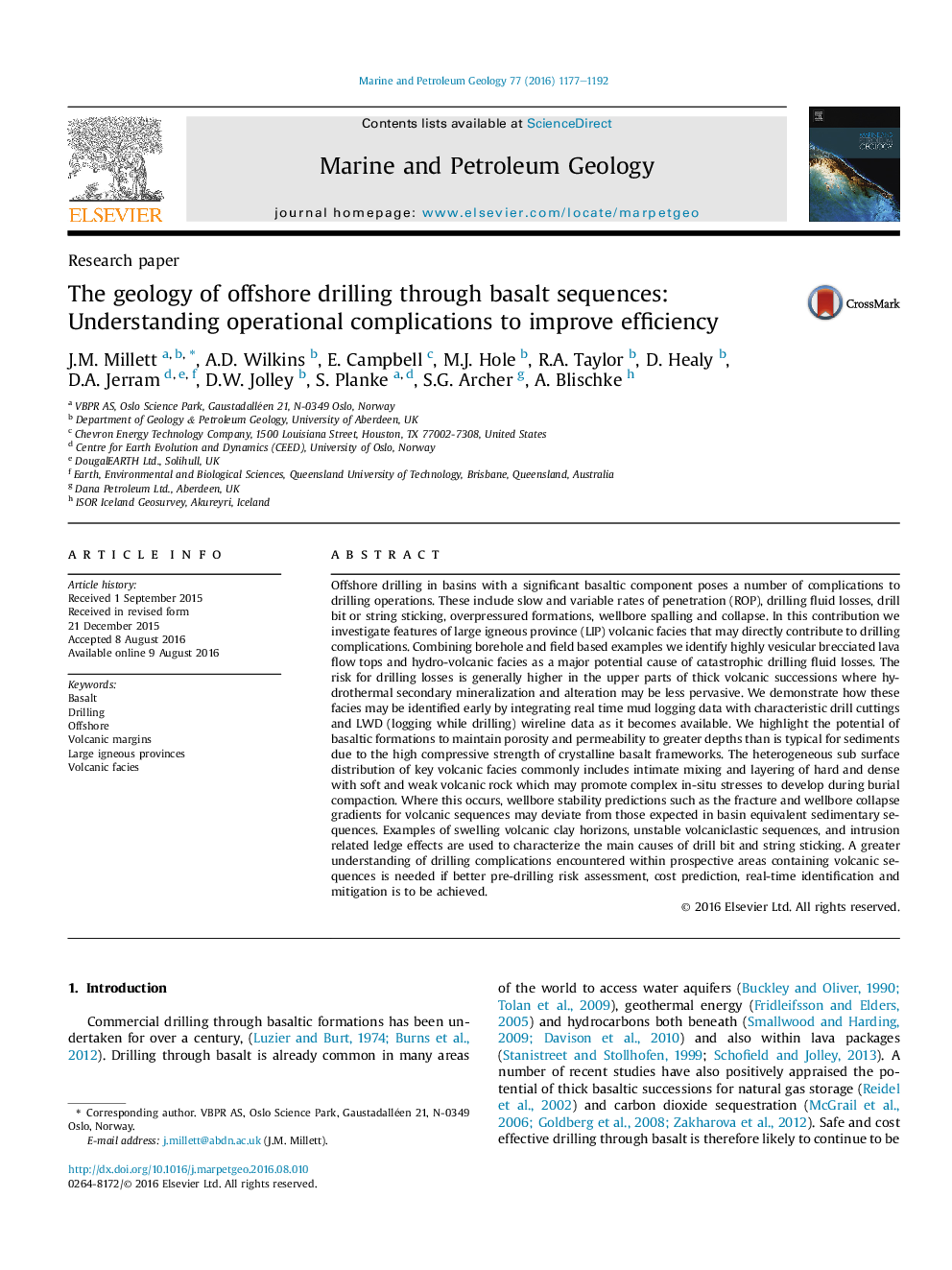| کد مقاله | کد نشریه | سال انتشار | مقاله انگلیسی | نسخه تمام متن |
|---|---|---|---|---|
| 6434677 | 1637150 | 2016 | 16 صفحه PDF | دانلود رایگان |
- Volcanic rocks can pose significant challenges for drilling operations.
- The geological causes of drilling problems may differ from those encountered in sedimentary sequences.
- Volcanic frameworks can retain porosity to greater depths than predicted by sedimentary compaction.
- Complex in-situ stresses may develop during burial of mixed hard and soft volcanic facies.
Offshore drilling in basins with a significant basaltic component poses a number of complications to drilling operations. These include slow and variable rates of penetration (ROP), drilling fluid losses, drill bit or string sticking, overpressured formations, wellbore spalling and collapse. In this contribution we investigate features of large igneous province (LIP) volcanic facies that may directly contribute to drilling complications. Combining borehole and field based examples we identify highly vesicular brecciated lava flow tops and hydro-volcanic facies as a major potential cause of catastrophic drilling fluid losses. The risk for drilling losses is generally higher in the upper parts of thick volcanic successions where hydrothermal secondary mineralization and alteration may be less pervasive. We demonstrate how these facies may be identified early by integrating real time mud logging data with characteristic drill cuttings and LWD (logging while drilling) wireline data as it becomes available. We highlight the potential of basaltic formations to maintain porosity and permeability to greater depths than is typical for sediments due to the high compressive strength of crystalline basalt frameworks. The heterogeneous sub surface distribution of key volcanic facies commonly includes intimate mixing and layering of hard and dense with soft and weak volcanic rock which may promote complex in-situ stresses to develop during burial compaction. Where this occurs, wellbore stability predictions such as the fracture and wellbore collapse gradients for volcanic sequences may deviate from those expected in basin equivalent sedimentary sequences. Examples of swelling volcanic clay horizons, unstable volcaniclastic sequences, and intrusion related ledge effects are used to characterize the main causes of drill bit and string sticking. A greater understanding of drilling complications encountered within prospective areas containing volcanic sequences is needed if better pre-drilling risk assessment, cost prediction, real-time identification and mitigation is to be achieved.
503
Journal: Marine and Petroleum Geology - Volume 77, November 2016, Pages 1177-1192
